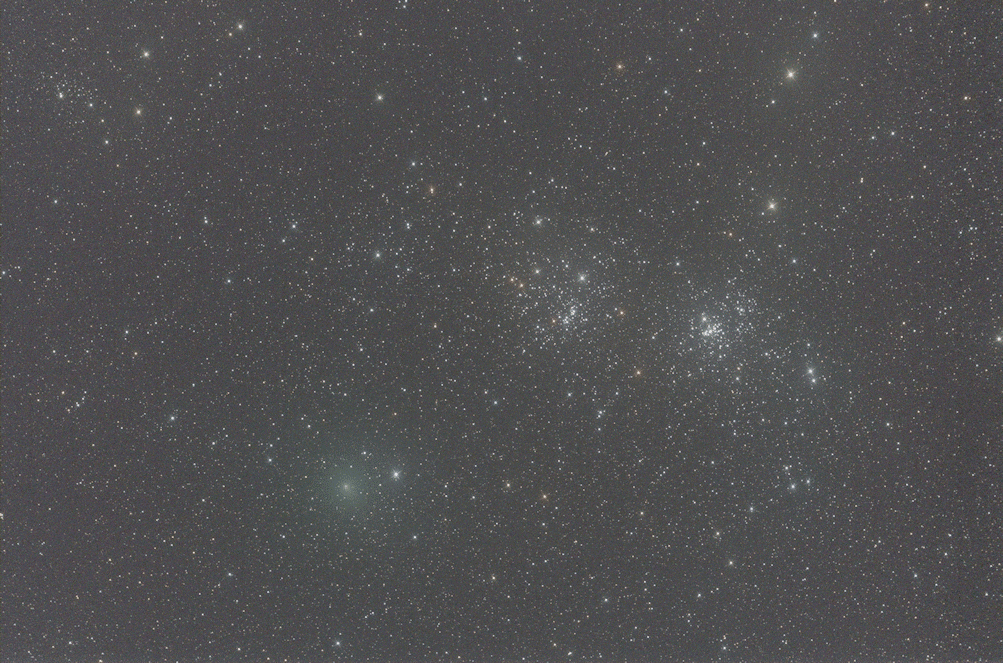A GIF animation of the comet's movement on October 8, 2010 during 2 hours and 39 minutes, when it passed close to h and χ Persei. The exposure time of each image was 2 minutes. There are some larger gaps and a greatly varying background brightness due to thin clouds passing through the field of view. File size 8.1 MB, so it may take a while to load. See also a higher-resolution still image created from this exposure series. The autoguider was trained on a star. North is up, east to the left.
If the animation does not run smoothly in your web browser, you can save it to your harddisk and view it from there.

Comet 103P/Hartley, informally known as Hartley 2, is a small periodic comet with an orbital period of 6.5 years. It has been classified as a young dwarf comet, belonging to the Jupiter family of comets (i.e. comets with periods less than 20 years). Hartley 2 was discovered by Malcolm Hartley in 1986. Its diameter has been measured to approx. 1.5 km. The comet passed within 0.12 AU of the Earth on October 20, 2010, only eight days before its perihelion.
Comet Hartley was the subject of a flyby by the spacecraft Deep Impact on November 4, 2010, with a closest approach of 700 kilometers. Many images of the comet's core where taken then.
The comet apparently passed close to the Double Cluster in Perseus as seen from Earth on October 8, 2010. It became not as bright as predicted. Visually, it was inconspicuous, with a large, diffuse coma and central core, but no apparent tail.
Exposure Data